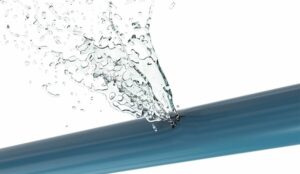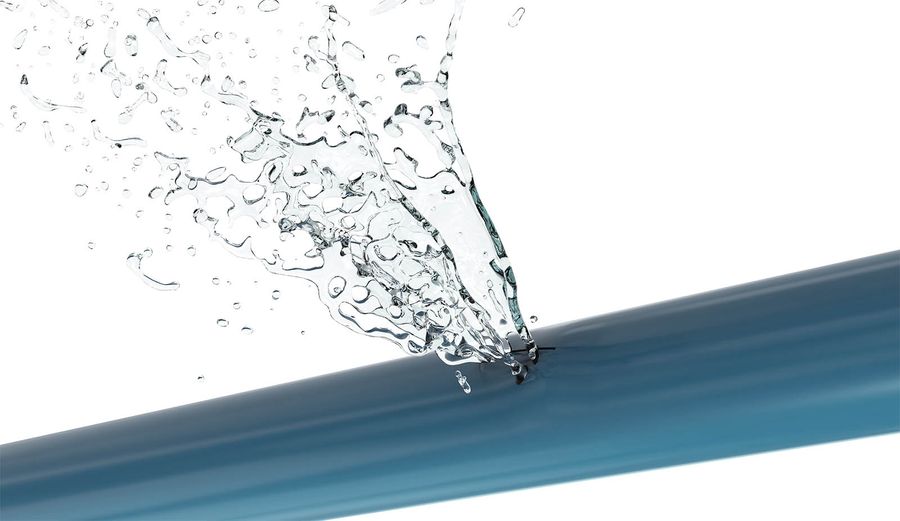There are around 100 water damage incidents a day in Finland. However, a great deal of damage can be prevented by your own actions. This is why it is important to understand the factors that influence the risk of leakage in your home. In this article, we have listed the five most common causes of water damage in Finland. The rankings of water damage causes are based on the Central Federation of the Financial Services Industry’s leakage damage survey.
Rank 5: water fittings and equipment
Water fixtures – such as toilets and taps – are the fifth most common cause of water damage. When assessing the risk of water damage, faucets, mixers, shut-off valves and toilet seats and tanks are the most important things to keep an eye on. Water damage can be caused by forgetting to leave the tap open, but leaks can also be caused by old tap connections. Scent traps can also leak – especially if they are installed incorrectly. You can read more about this topic in our blog post on HVAC problems in a smell trap. Toilet seats or tanks, on the other hand, can cause leakage damage if they develop a crack. Contrary to popular belief, a seat or tank can also crack “by itself” without any impact.
Water fixtures should be replaced or repaired as soon as possible if any leakage is detected. Consider replacing taps if they appear worn and brittle. Based on the statistics, it can be said that the replacement of water fixtures is an issue, their age is about 25 years. However, it should be noted that this is only an indicative figure, as different furniture will wear and tear at different rates.
Rank 4: heating network/heating network
The heating network, i.e. water-coupled radiators and their connected pipework, is the fourth most common cause of water damage. Over time, piping becomes brittle, for example due to corrosion. In particular, water added to the system causes embrittlement, as it contains oxygen, which corrodes the pipe from the inside. If water has to be added regularly, there may already be a leak in the pipe.
The heat network is particularly problematic in terms of water damage because the pipes often run inside structures, making it impossible to inspect their condition. Even if the visible part of the pipework looks in good condition, it doesn’t really tell you anything about the condition of the hidden pipework, as corrosion causes uneven deterioration.
The condition of the pipes in the heating network is particularly important to keep an eye on when the pipes are over 23 years old, as at this age the risk of water damage already starts to be significant. But if the age of the heating network approaches 40 years, we are already in very dangerous waters. If you live in a detached house, you can book a free heating network assessment from Taloturva.
Position 3: dishwasher
The risk of water damage from a dishwasher may come as a surprise, but it’s true: according to statistics, a dishwasher is the third most common cause of leakage damage. The dishwasher is problematic for water damage because it is not located in a wet room. If a leak occurs, the water will not run down the floor drain, as it would with a washing machine, for example.
You can reduce the risk of water damage from your dishwasher by replacing the drain hose every five years or so. If the machine is moved, for example, you should replace the hose at the same time, if it has aged. But if the machine itself is more than 15 years old, you may want to consider replacing it too.
Position 2: sewer
Sewer pipes are the second most common cause of water damage, and no wonder: there are many old houses in Finland where the sewer has become badly corroded. It should also be pointed out that plastic pipes are not immune to the ravages of time. Plastic also becomes brittle over the years and eventually cracks. You can read more about this in our blog post on plastic sewers.
Sewer pipes do not only deteriorate from the outside, but also from the inside, as many different corrosive substances are transported through the pipe. This is why it is not worth assessing the condition of a sewer pipe just by looking at the visible parts of the pipe. The actual condition can be determined by taking a picture of the sewer pipe from the inside using a sewer camera. If you live in a detached house, you can book a free sewer survey for your house.
It is worth considering a drainage survey if the pipework is more than 22 years old, as the risk of water damage starts to increase significantly from this age. If the age of the piping system approaches 40 years, the risk of water damage becomes very high. However, a lot depends on the material and how responsibly the sewer has been used over the years. If the drain is “symptomatic”, for example if it clogs or if there is a smell of sewage in the house, a drain repair or maintenance may be in order.
Position 1: domestic water piping
Domestic water piping is the most common cause of leakage damage in Finland. Like the heating network, domestic hot water piping is susceptible to corrosion and is often hidden inside the house structure. In other words, a pipeline may look good from the outside, even if the pipes inside the structure are corroded. In addition, opening and closing the taps causes pressure surges that insidiously stress both the fittings and the plumbing.
The first place can also be partly explained by the fact that hot summers and cold winters in Finland expose domestic hot water pipes to large temperature fluctuations. The piping system is stressed as it continuously expands and contracts with changing temperatures. In a hot environment, a cold pipe also condenses water on its surface, i.e. “sweats”, which contributes to rusting. Cold weather is not good either; the risk of water damage increases, especially if the water pipe freezes. This is because the swelling ice inside the pipeline puts a lot of stress on the pipe.
When the plumbing system is more than 22 years old, it is worth considering having the condition of the plumbing system checked because of the increased risk of water damage. If a pipeline is well over 30 years old, the risk is already very significant. If you are a private homeowner, you can book a free assessment of the condition of your domestic water pipes from Hausoturva.
Assess the risk of leakage damage with a test
A test can now be found on the Hausoturva website to give you a rough estimate of the risk of water damage in your home. The test may reveal risk factors that you hadn’t thought of before – so all you have to do is try it!


















































































